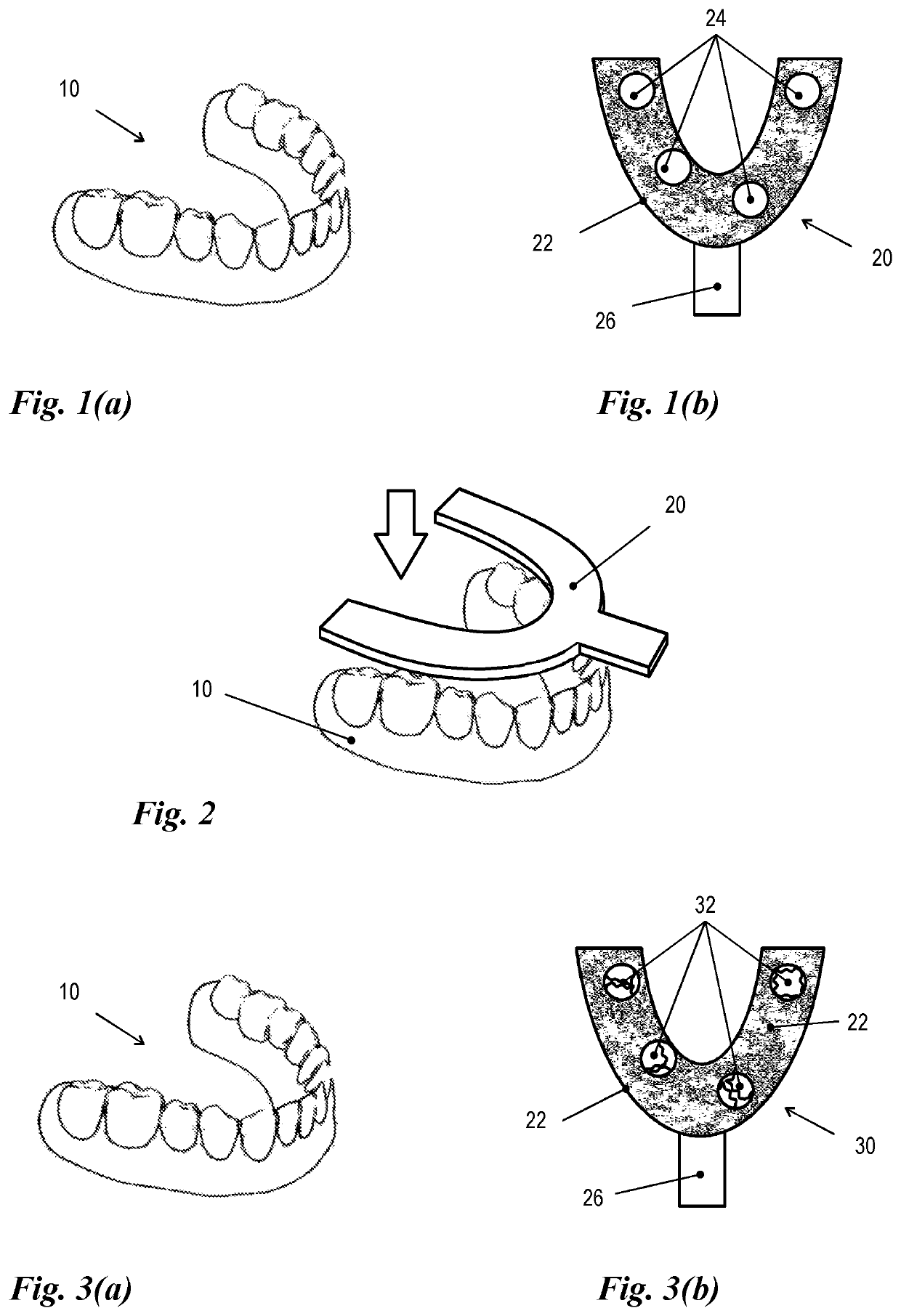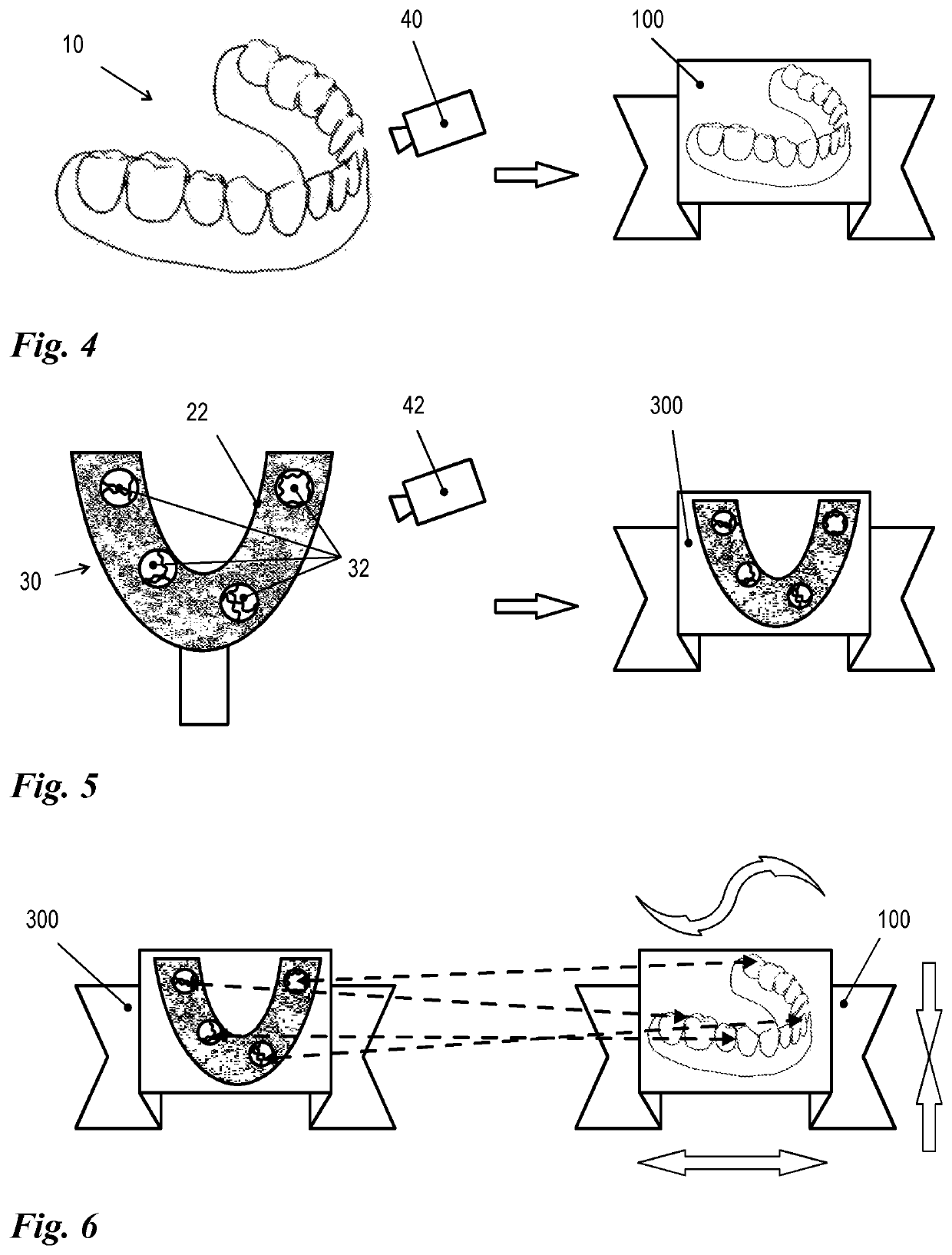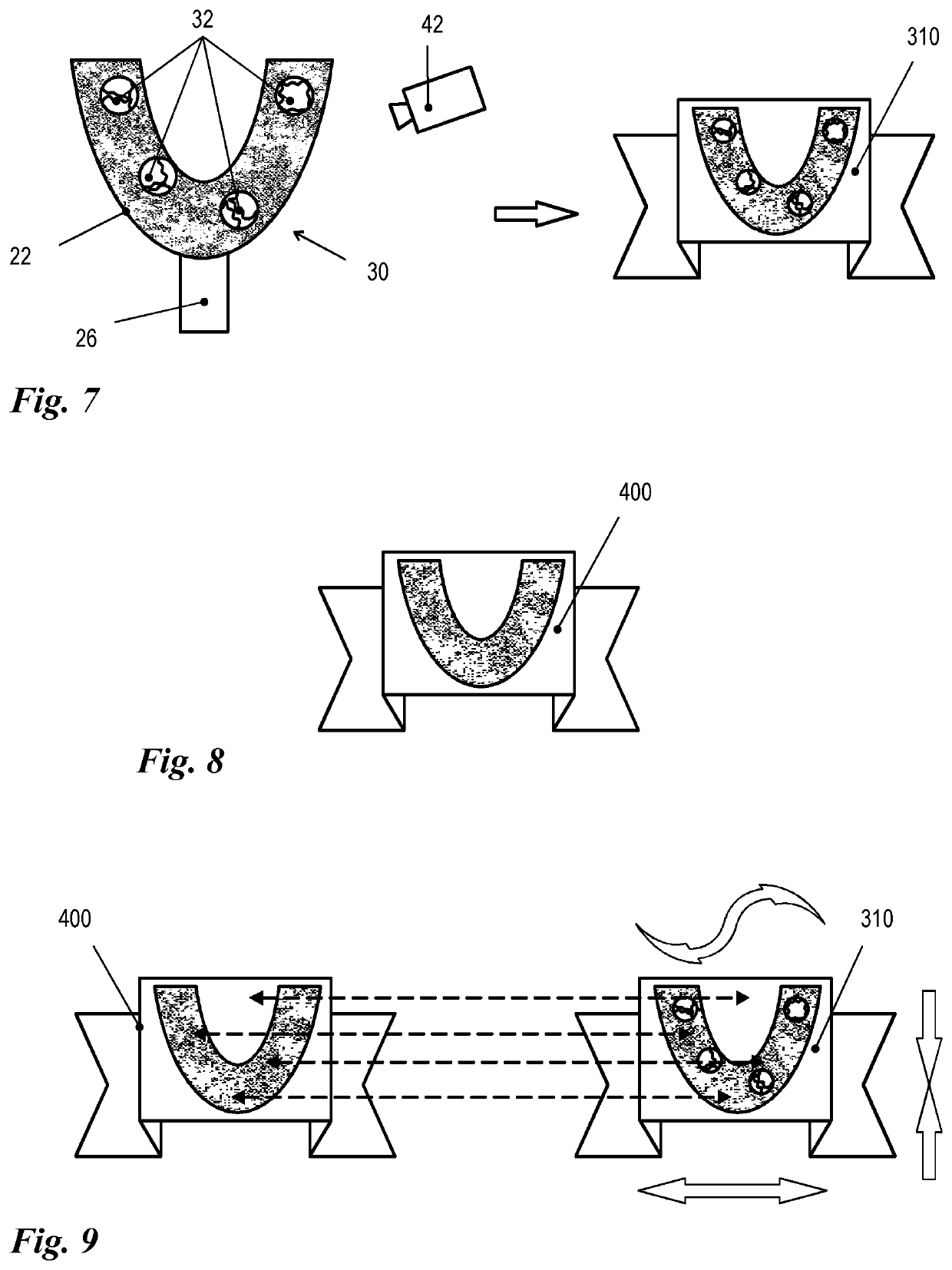Method for virtually modeling a dental arch
a virtual model and dental arch technology, applied in dentistry, dental prosthetics, medical science, etc., can solve the problems of increasing the labor and unpleasantness of the entire procedure, the patient's approach is not very expedient, and the patient's experience is not very pleasant, so as to achieve the effect of less onerousness for the patient, high dimensional accuracy of the virtual model, and high level of detail
- Summary
- Abstract
- Description
- Claims
- Application Information
AI Technical Summary
Benefits of technology
Problems solved by technology
Method used
Image
Examples
Embodiment Construction
[0042]Identical reference symbols in the figures indicate identical or analogous elements.
[0043]FIGS. 1 to 6 show an advantageous embodiment of a method according to the invention for virtual modeling of a dental arch 10. In Sub-FIG. 1a, the dental arch 10 is shown in isolated fashion. This serves only the purposes of clarity of the drawings, however. The method according to the invention relates in particular to the modeling of a dental arch 10 in situ. Sub-FIG. 1b shows an impression body 20, such as is preferably used in the context of the method according to the invention. The impression body is composed of an impression plate 22, that bears a non-periodic relief-type pattern, which is preferably composed of statistically distributed pattern elements, especially preferably of ball segments with different radii and / or different heights. On the impression plate 22, multiple—four in Sub-FIG. 1b—portions 24 of deformable impression material are positioned in isolated fashion from on...
PUM
 Login to View More
Login to View More Abstract
Description
Claims
Application Information
 Login to View More
Login to View More - R&D
- Intellectual Property
- Life Sciences
- Materials
- Tech Scout
- Unparalleled Data Quality
- Higher Quality Content
- 60% Fewer Hallucinations
Browse by: Latest US Patents, China's latest patents, Technical Efficacy Thesaurus, Application Domain, Technology Topic, Popular Technical Reports.
© 2025 PatSnap. All rights reserved.Legal|Privacy policy|Modern Slavery Act Transparency Statement|Sitemap|About US| Contact US: help@patsnap.com



